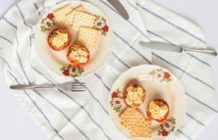General Food Plastic S.l. is located in Doctor Fleming (Sangonera Seca), 15, 30835 Murcia Spain, in Spain and the main services are Plastics Industrial Machinery And Equipment, Injection — Plastics Machinery.
You can view all companies like General Food Plastic S.l. in all countries :
- Литье изделий из пластмасс на заказ
- Компания ЕВРОПАК — качество, проверенное временем
- ПОЧЕМУ ВЫБИРАЮТ ИМЕННО НАС?
- ИНДИВИДУАЛЬНЫЙ ПОДХОД К КАЖДОМУ КЛИЕНТУ
- СПРОЕКТИРУЕМ, ИЗГОТОВИМ, МОДЕРНИЗИРУЕМ!
- Food safe symbol
- European Union
- United States
- Leaching of chemicals from Plastic into food
- Here are few ways to reduce or minimize plastic in our food
- Non-stick cookware is another way where plastic comes into our life
- Смотрите видео: Полиэтиленовые пакеты купить у производителя тел 8 800 555 72 87
Литье изделий из пластмасс на заказ
Предлагаем литье изделий из пластмассы под заказ. Мы гарантируем строгий контроль качества на всех этапах производства и полное соответствие продукции оговоренным требованиям и действующим стандартам. Мы гарантируем индивидуальный подход, минимальные сроки выполнения заказа и разумную стоимость.
Компания ЕВРОПАК — качество, проверенное временем
За время работы нашей компании мы накопили огромный опыт в литьевом бизнесе и создали сплоченный коллектив единомышленников. С нами сотрудничают десятки крупных организаций и частных предпринимателей в сфере торговли одноразовой посудой. Нам доверяют за скорость, качество и надежность поставок!
ПОЧЕМУ ВЫБИРАЮТ ИМЕННО НАС?
Главное, что отличает нашу компанию от многих других — это реальные гарантии, подтвержденные действующим производственным цехом и опытными инженерами и инструментальщиками. Ведь заказать и привезти пресс-форму из Китая, в наше время , дело не хитрое. А вот, что делать, если эта пресс-форма вдруг перестанет работать? Не везти же ее обратно в Китай.
Вот поэтому с нами предпочитают работать многие крупные компании, поставляющие свою продукцию в сетевые магазины. Для этих клиентов жизненно необходимо обеспечивать стабильность поставок, и они доверяют нашему опыту и уверены в наших возможностях.
ИНДИВИДУАЛЬНЫЙ ПОДХОД К КАЖДОМУ КЛИЕНТУ
Используя иногда очень нестандартные подходы, мы стремимся предложить нашим клиентам наилучшие варианты решения их задач. Мы не стремимся к тому, чтобы клиент заказал как можно больше и дороже, ведь всем сейчас нелегко. Так, например, иногда вместо нескольких пресс-форм мы реализуем проекты, где несколько деталей прекрасно размещаются в одной пресс-форме, хотя изначально клиент предполагал делать несколько пресс-форм.
СПРОЕКТИРУЕМ, ИЗГОТОВИМ, МОДЕРНИЗИРУЕМ!
Время от времени к нам обращаются клиенты, у которых нет ни чертежей не моделей будущих изделий. Есть лишь образцы, а иногда и просто рисунки. Причем, в дополнение ко всему, эти изделия вообще не могут быть произведены методом литья пластмасс под давлением. В итоге нам приходиться производить целый комплекс подготовительных работ по адаптации изделия, проектированию нескольких вариантов 3D моделей будущего изделия и в итоге переходить к процессу изготовления пресс-формы.
Но и это еще не все. Зачастую клиенту требуется, что-то изменить в уже готовом изделии, когда пресс-форма готова и может работать. И это мы тоже можем сделать, причем очень оперативно, так как все у нас есть – и специалисты и оборудование. Кроме того иногда мы отливаем тираж изделий.
Food safe symbol
The international symbol for "food safe" material is a wine glass and a fork symbol. The symbol indicates that the material used in the product is cons > The regulation is applicable to any product intended for food contact whether it be made of metals, ceramics, paper and board, and plastics. Use of the symbol is more significant in products which should be explicitly >
In plastic containers, over and above the prescribed resin />), the food safe assurance is required because the resin identification codes do not explicitly communicate the food safe property (or more significantly, the lack of it).
Even though the legal requirement in various nations would be different, the food safe symbol generally assures that:
- The container surface is free of any toxic contaminants which could be contacted from the manufacturing process.
- The container material shall not potentially become a source of toxic contamination through usage (degeneration). This is assured by estimating and regulating the "migration limits" of the material. In EU regulation, the overall migration is limited to 10 mg of substances/dm² of the potential contact surface. The specific migration for various materials would be different for different temperature levels (of food as well as storage) and for different food items depending on variables such as pH of the food stuff. The toxicity cons >
Note that the "food safe" symbol doesn't guarantee food safety under all conditions. The composition of materials contacting foodstuffs aren't the only factor controlling carcinogen migration into foodstuffs, there are other factors that can have a significant role in food safety. Examples include: the temperature of food products, the fat content of the food products and total time of contact with a surface. The safety of foam food containers is currently debated and is a good example of all three of these factors at play. Polystyrene may melt when in contact with hot or fatty foods and may pose a safety risk. In the United States, materials in contact with food may not contain more than 1% polystyrene by weight (0.5% for fatty foods).
European Union
The framework Regulation (EC) No. 1935/2004 applies to all food contact materials. Article 3 contains general safety requirements such as not endanger human health, no unacceptable change in the composition and no deterioration of the organoleptic characteristics. Article 4 set out special requirements for active and intelligent materials. Article 5 specifies measures for groups of materials that may be detailed in separate regulations of directives. Member States may maintain or adopt national provisions (Article 6). Articles 7-14 and 22-23 deal with the requirements and application for authorisation of a substance, modification of authorisation, the role of the European Food Safety Authority, the Member States and the Community. Article 15 is about labeling of food contact materials not yet in contact with food. Article 16 requires a declaration of compliance and appropriate documentation that demonstrate compliance. Articles 17-21 deal with traceability, safeguard measures, public access of applications, confidentiality, and data sharing. Article 24 sets out the inspection and control measures.
Specific measures for materials and articles such as ceramics, regenerated cellulose, plastics, gaskets and active and intelligent materials, and substances such as vinyl chlor >
EU No 10/2011 is applicable regulation for all the Food contact material or Article made up of Plastics.
United States
- Direct food additives — components added directly to the food
- Secondary direct food additives — components that are added to the food due to food treatment like treating food with ionic resins, solvent extraction
- Indirect food additives — substances that may come into contact with food as part of packaging or processing equipment, but are not intended to be added directly to food
The food contact materials are described in the Code of Federal Legislation (CFR): 21 CFR 174 — 21 CFR 190. Important starting points are:
- 21 CFR 175 Indirect food additives: Adhesives and components of coatings
- 21 CFR 176 Indirect food additives: Paper and paperboard components
- 21 CFR 177 Indirect food additives: Polymers
To this materials additives may be added. Which additives depend on the additive and on the material in which it is intended to be used. There must be a reference to the paragraph in which the additive is mentioned and the restrictions (for example only to be used in polyolefines) and limitations (max 0.5% in the final product) must be respected. See below for part in which additives are described: 21 CFR 170 Food additives
- 21 CFR 171 Food additive petitions
- 21 CFR 172 Food additives permitted for direct addition to food for human consumption
- 21 CFR 173 Secondary direct food additives permitted in food for human consumption
- 21 CFR 178 Indirect food additives: Adjuvants, production aids, and sanitizers
- 21 CFR 180 Food additives permitted in food or in contact with food on an interim basis pending additional study
Polymers or additives can also be regulated in other ways with exemptions, for example: clarification needed
- Threshold of regulation
- Food contact notification
- Private letters
- Prior sanctioned food ingredient
- Generally recognized as safe (GRAS)
Leaching of chemicals from Plastic into food
As shared earlier, plastic is primarily mass manufactured in modern times by using various by-products from crude oil. During the manufacturing process, few chemicals may be added to provide different capabilities to the plastic to control properties such as texture, strength, and sturdiness of the manufactured plastic product. Similarly, few chemicals may be added to impart color to the finished plastic product.
When the food comes into contact with such plastic containers, a small amount of these chemicals are known to inevitably leak into the food. The extent of leakage may vary based on a factor such as the duration of contact with the container, whether food is heated in the container and also the type of food. Foods that contain fatty acids can suffer from a relatively larger amount of leakage. The non-stick coating is also made of a plastic called Teflon which is generally safe but can leach toxic chemicals at very high temperature.
Two chemicals that are high in the suspect category include bisphenol A and chemicals known as phthalates. Bisphenol A is a chemical that helps makes the plastic hard and lightweight. BPA is known to leach into the food and cause disruption to our hormone system. Likewise, phthalates are also known to cause an imbalance in the hormones system.
Here are few ways to reduce or minimize plastic in our food
- Use safer alternatives such as water bottles with steel or glass lining on the inside.
- Ensure that the container has a steel lining when it is used to store any hot food item.
- Don’t microwave food in plastic containers even when the container has a microwave safe label.
- Use safer dishware and utensils that are made of steel or glass.
- Discard plastic containers that are scratched or worn out.
- Do not use plastic bottles such as water or soda bottles for storing water as they are meant for single-time use.
- Store food, especially wet food in glass or pyrex containers than storing in plastic.
Non-stick cookware is another way where plastic comes into our life
The non-stick coating is made of a chemical called Teflon. While it is believed that it is generally safe to use a non-stick when the cooking is done at low temperatures, use at high temperature should be avoided. Further, if the coating is scratched or chipped, it is recommended to replace it immediately.
For food items that require high temperature and long time, it is best to avoid a non-stick cooking option and use alternatives such as a steel or cast-iron cookware.
If you prefer to use non-stick, keep following precautions in mind.
- Use only for food items that require low-temperature heat
- Never preheat the cookware at high temperature, even with oil.
- Avoid using a damaged or chipped non-stick cookware.
Plastics are here to stay and one cannot avoid them completely, but one can minimize the health hazards by being aware of how to use plastic safely in our lives.










